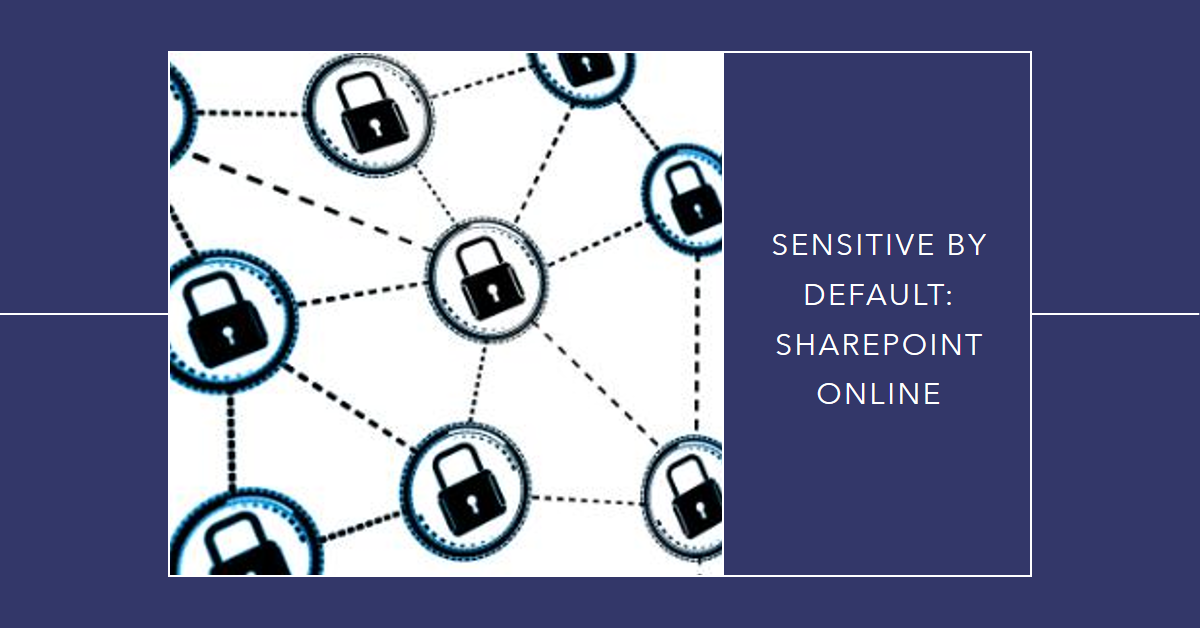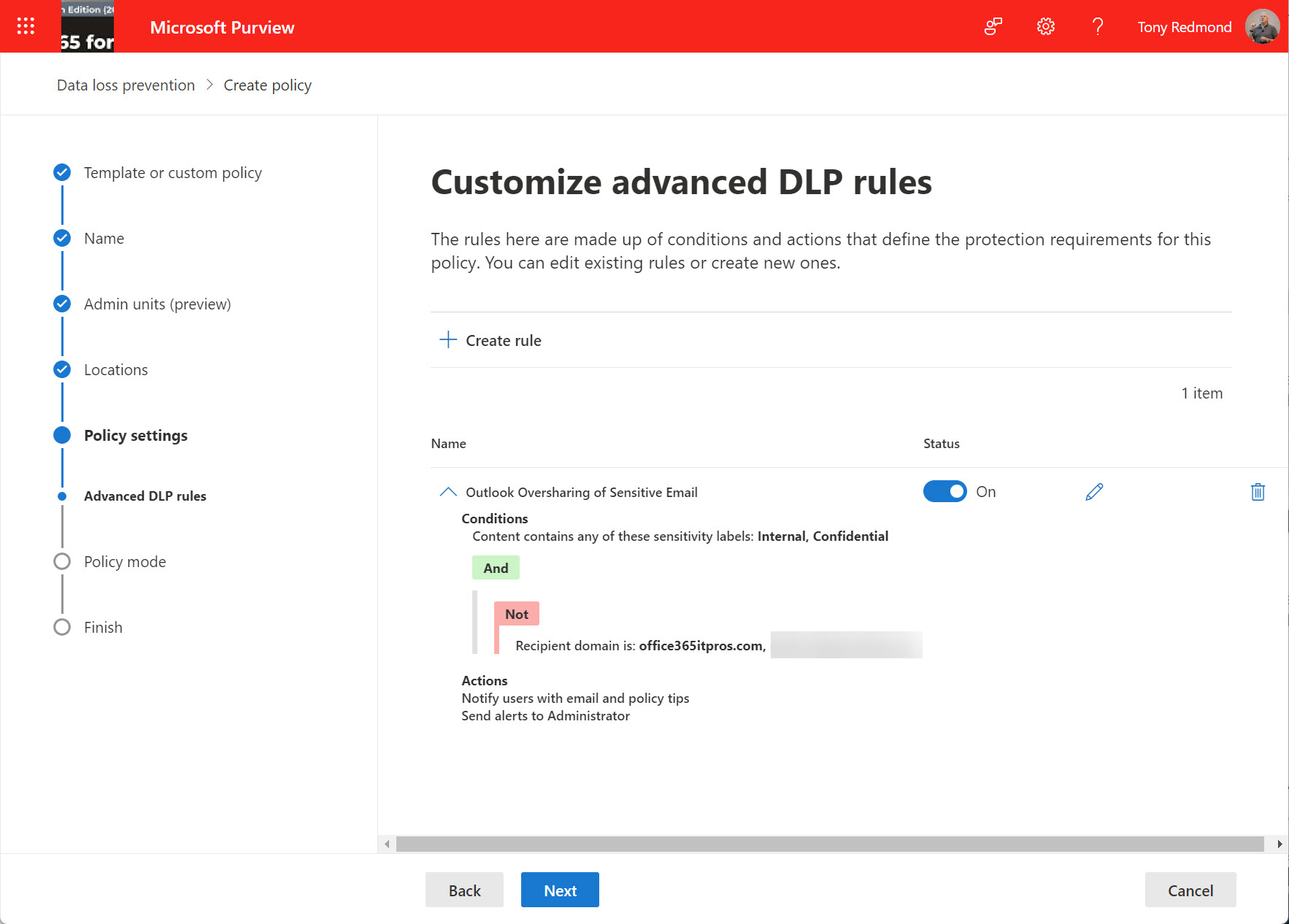The Sensitive by Default control allows tenants to prevent external access to newly uploaded documents until DLP processing checks their content. The idea is to close off the opportunity external users have to access control between its upload and DLP scanning of the content. You can combine the sensitive by default control with sensitivity labels to exert maximum control over confidential material.
An update for Microsoft 365 Data Loss Prevention policies supports the configuration of oversharing popups for Outlook shown when a user composes email with specified sensitivity labels for either the message or any attachment. The idea is that the popup (a policy tip) helps the user to understand the problem and why they are violating a DLP policy so that they can address the problem before attempting to send the message.
Microsoft 365 Data Loss Prevention (DLP) policies have wide-ranging capabilities when it comes to rules and exceptions. One exception covers the various types of encrypted email that can pass through the Exchange Online transport pipeline. As it happens, three message types are supported, but who could have guessed that permission controlled means rights management?
To make Microsoft 365 DLP policies work like Exchange transport-rule based DLP, a January change will switch evaluation of sender conditions away from envelope information to message headers. Although this change might seem to be something beloved of email geeks, it’s actually an important update for organizations who want to move away from ETR-based DLP to Microsoft 365 DLP policies.
Microsoft has made Endpoint DLP generally available. Leveraging Windows 10 workstations and the Edge browser, Endpoint DLP sends signals for evaluation to detect possible violations. The solution requires Microsoft 365 licenses and only supports Windows, so it’s not for every tenant. But those who have Microsoft 365 licenses will find this an attractive solution.
When you need to block external access to your most sensitive documents, Office 365 Data Loss Prevention policies and sensitivity labels combine to find and protect the documents. A really simple policy is enough to detect and block external access, and is covered by Office 365 E3 licenses. If you have E5 licenses, you can consider auto-label policies to find and protect sensitive documents at scale.
In a sign of how automation based on signals gathered by Office 365 will emerge to help administrators do a better job, the preview of the new Admin Center offered to create a DLP policy to protect some sensitive information that I had clearly overlooked. Well-intended as the portal was, its efforts to create the new policy failed. That’s not really important – it’s the glimpse into the future which is.
Office 365 offers different ways to apply encryption to important messages. When those messages hold sensitive data known to Office 365, like credit cards or passport numbers, we can define a transport rule or DLP policy to protect outbound email automatically. And while you can define rules and policies through the GUI, PowerShell is available too.
Microsoft thoughtfully provided Office 365 tenants with a Data Loss Prevention template for GDPR personal data. The only problem is that the rules in the template were too sensitive and started to block email.








